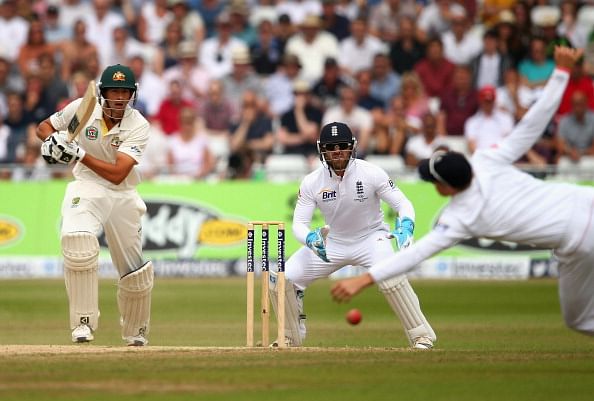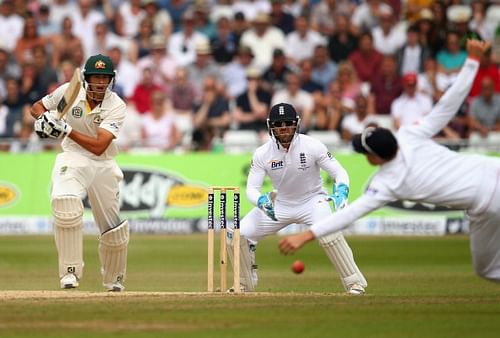
Australia's batsmen need to protect their their tail and not the other way around

Ashton Agar
Glenn “Pigeon” McGrath is undoubtedly one of the all-time greats in the game of cricket. He was a part of the Australian team that dominated the game from the late 90s to the mid-2000s. Such was their domination that throughout his 14-year international career, he averaged 7.36 and 3.83 in ODIs and Tests respectively.
Such low averages could have been because he has never been a useful lower order bat. However, there have been occasions when he has had to hold one end, with a better batsman batting at the other end. Part of it is also because he used to bat at no.11 for a team that boasted of some great batsmen and was pretty hard to be bowled out.
On the other hand, 23-year-old Mitchell Starc has been in the team for almost two and a half years and in 10 Tests and 19 ODIs that he has played in, he averages a respectable (and remarkable) 27.33 and 40.66 respectively. Not only that he already boasts of two half centuries in Tests and one in ODIs.
While he has always been a handy lower-order batsman in domestic cricket, Starc’s success has much to do with the failure of his teammates batting at the top and middle order in the national team. The repeated failures of the specialist batsmen has given plenty of opportunities to “batsmen” like Starc, who have accepted it with both hands, and on occasion, taken the team on the brink of victory.
Much is being made of Australia’s “fight back” in the first Ashes Test against England, and the fact that they came within touching distance of causing an upset. But the truth, however, is all this happened because of the heroics of a certain Ashton Agar, a debutant whose whirlwind knock of 98, led Australia to a 65-run lead in the first innings, and James Pattinson who batted bravely alongside Brad Haddin to almost carry his team to an improbable victory.
One may talk about the gutsy performances of the Australian lower-order, but the truth is that it is the job of specialist batsmen, and not bowlers, to score runs for the team. The pattern, however, has been painfully similar for Australia in recent times, who collapse in a heap, only to be revived by the lower order.
The problem for Australia starts right at the top, where barring Michael Clarke, no batsman has shown any fight. Shane Watson, a world-class all-rounder in the limited overs formats, is yet to establish himself in Tests. Despite being an opener, he averages only in the mid-30s and has only two centuries to his name, the last one coming way back against India in October 2010.
He has this knack of breaking down at crucial times and his inability to score runs in Tests has hurt his team badly. However, just like him, others around him have fared no better. His (former) opening partner Ed Cowan himself has found the going tough. His recent struggles are an indication of the doldrums Aussie batting is in right now.
Such were their woes that they had to go back to a soon-to-be 36 years and one-Test old Chris Rogers to partner Watson. The “cool” and “calm” Rogers was said to be the perfect foil for the “aggressive’ Watson and as we saw in the second innings, things could really work out for them.